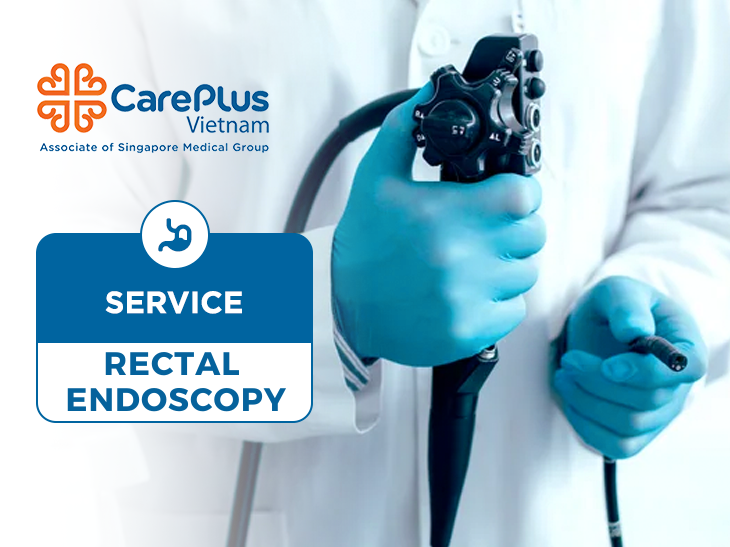Rectal Endoscopy - Local Anesthesia

WHAT IS A RECTAL ENDOSCOPY?
The rectum is the final part of the large intestine, approximately 20 to 30 cm in length. It serves as the connection between the anus and the colon. The main function of the rectum is to store waste and, through bowel movements, expel feces through the anus.
Rectal endoscopy with local anesthesia is a safe procedure that allows direct observation of the rectal mucosa using a flexible tube with a camera attached at the end, which is inserted through the anus. Through the images on the endoscopy machine, doctors can see, classify the level of damage, and accurately diagnose the appropriate treatment methods as well as directly intervene in the damage. Endoscopy can help doctors detect very small lesions, only a few millimeters, that other methods like ultrasound, CT, MRI, and X-rays might miss.
WHO NEEDS RECTAL ENDOSCOPY?
Rectal endoscopy is indicated for patients suspected of having gastrointestinal issues (anus, rectum, etc.). For each case, the doctor will consider the patient's health status and related issues to recommend endoscopy.
- The recommended age for individuals in the average risk group to start screening for cancer is currently 35 - 45 years.
- Having family members (grandparents, parents, siblings) with gastrointestinal diseases such as esophageal cancer, stomach cancer, colorectal cancer, or multiple polyps in the gastrointestinal tract.
- Experiencing symptoms such as mucus in stool, bloody stool (especially if hemorrhoids or colon tumors are suspected), unexplained weight loss, changes in bowel habits, anemia, etc.
- Abnormal images on colon X-rays or ultrasound.
- Indications for intervention treatment or follow-up after treatment.
WHAT DISEASES CAN RECTAL ENDOSCOPY DETECT?
It can survey benign conditions in the lower gastrointestinal tract such as hemorrhoids, anal fissures, anal fistulas, rectal ulcers, rectal diverticula, Crohn's disease, and monitor the progression of diseases in cases that have undergone surgery in the anorectal area.
|
NOTES:
|